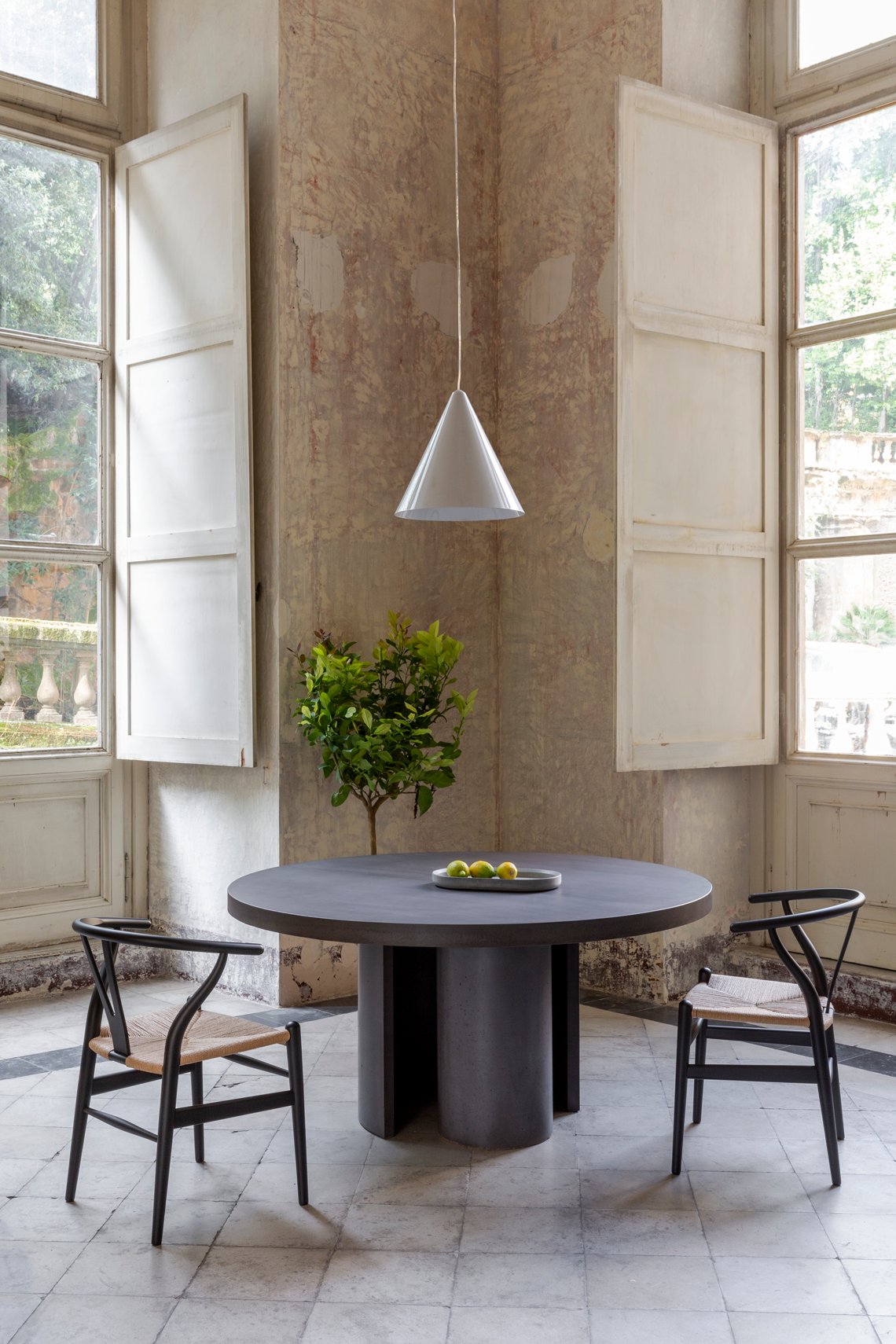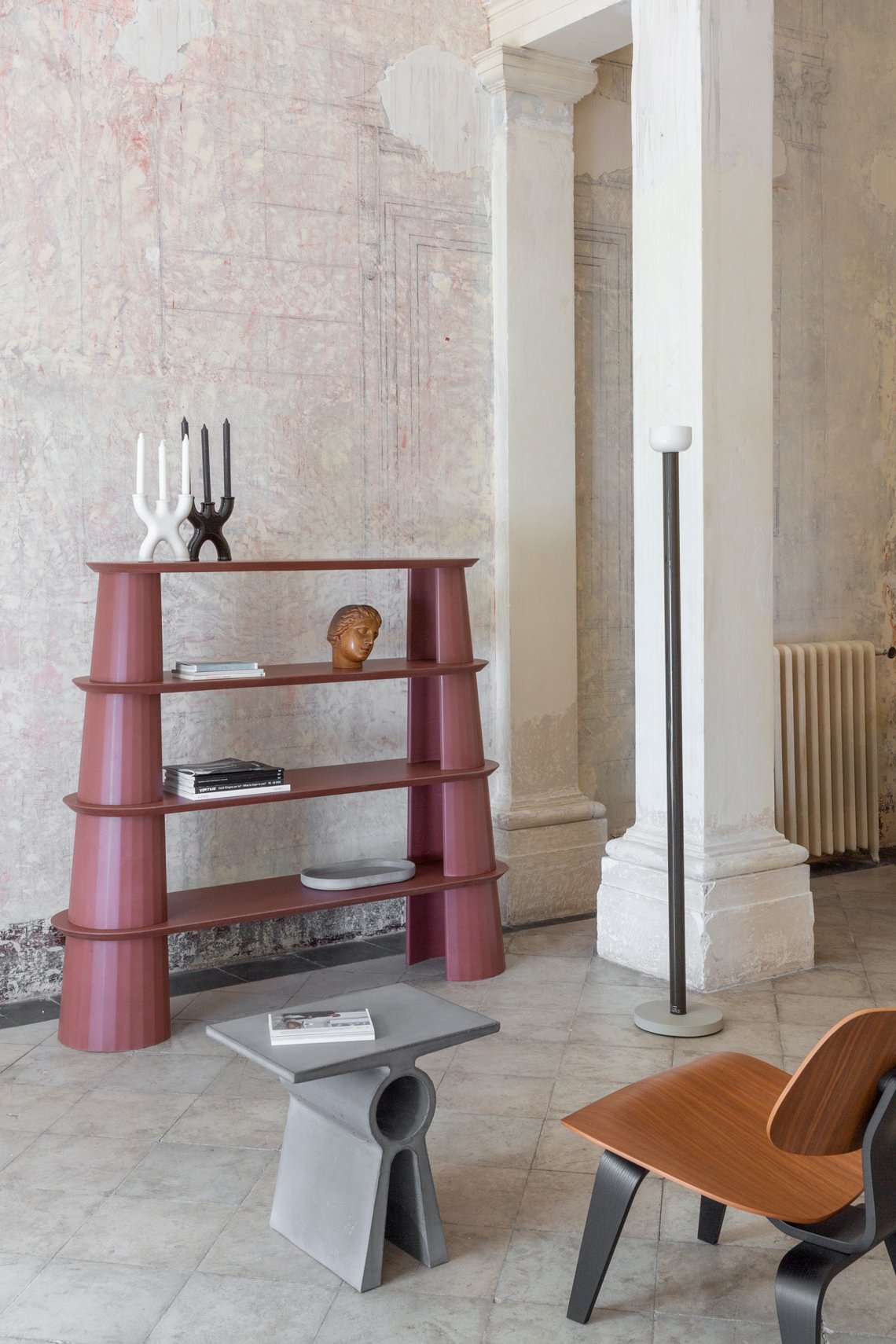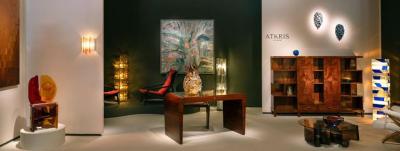How Forma & Cemento Made Concrete Fashionable in Furniture
 |
| Forma & Cemento transforms humble concrete into graceful, beautifully detailed furniture. Here, a bookshelf and dining table from the Fusto Collection, featuring faintly grooved pedestals that recall the fluted columns seen In ancient Roman and Greek architecture. |
How Forma & Cemento Made Concrete Fashionable in Furniture
by Benjamin Genocchio
When we think of furniture, concrete isn't the thing that comes immediately to mind, unless of course you are Giorgio La Corte, CEO and Founder of the brand Forma & Cemento located on the colorful Via Prenestina in Rome. He sat down with Benjamin Genocchio, Editor-in-Chief of Incollect Magazine, to discuss the enormous success of the business.
 |
| Giorgio La Corte, CEO and Founder of the brand Forma & Cemento. Photo by Serena Eller. |
What do you specialize in as a designer and dealer?
Forma & Cemento is the foremost Italian producer of all concrete furniture, accessories, and surfaces in UPHC (Ultra High Performance Concrete) concrete mixtures. Each of our products is designed and entirely handmade in Italy by a team of expert artisans.
How did you come to work with concrete?
I started my career as a structural engineer and amongst many materials I had to specifically deal with, concrete was one of them due to its amazing structural properties. But one day while I was waiting for the underground train, I admired the beauty of the texture of this usually hidden material. I thought that concrete’s unique features would look wonderful even on furniture, so I put together my competence in the material with the idea of creating concrete furniture and after that Forma & Cemento was born.
 |  | |
| Left: Three new occasional tables from the Abecedario Collection. Right: The Atlante Dining Table. The base is formed of a half-round pedestal bracketing a full round pedestal, creating an interplay of shadow and reflection. Photos by Serena Eller. | ||
 |
| The Fusto Oval Dining Table |
How is concrete different to work with than other stone materials?
Working with concrete is an iterative process: it changes for every single product and color: the mixture undergoes continuous changes to be as efficient as possible for the shape and the product being made. Unlike other stone materials, with which one works by subtraction, concrete is worked through casting.
A sense of style and lightness are qualities you strive for in your products. What is the most important consideration in achieving those qualities?
The importance is to overcome any prejudice on the use of the material in the home environment. This purpose often leads us to try to manipulate the thickness and the weight of the products to the limit, without hiding any of concrete’s specific features.
 |
| The Betti Low Table |
Is there a specific piece in your collection that you especially admire?
Betti marked the beginning of the collaboration with our artistic director Studio Irvine and gave the impetus to the birth of the Fusto Collection. We had the desire to play with references to architecture and, more generally, to the classical aesthetic that represents us so much; after all, concrete is a traditional material, as classic as Betti's aesthetics.
How would you define your aesthetic and what are some of your inspirations as designers?
My aesthetic is heavily influenced by classical architecture, due to my Sicilian origins, and by the great fathers of modern architecture such as Aldo Rossi, Carlo Scarpa, Enzo Mari, Tadao Ando etc.
.png) | .png) | |
| Each piece is hand finished by Forma & Cemento's team of artisans. | ||
Tell us about the process of making an object? How do you begin the design?
As mentioned, the process with cement is highly iterative in every phase, including the design process. The shape must adapt to the material and the material must accompany the shape. Our reality collaborates with different designers, and we are specialized in tailor-made projects.
Each object is the result of the constant dialogue between us and the designer. From time to time, I also personally dedicate myself to the design of a piece: I always turn to my studies as an engineer and to the knowledge and "faith" that I have in the material.
 |  | |
| Left: The Laoban Dining Table Right: Fusto Bookshelf II and Coffee/Side Table B. | ||
 |
| Betti Stool designed by Marialaura Rossiello Irvine, Studio Irvine. |
What is selling from your collections in the broader market at the moment, and how do you see that as a reflection of current style and how we live in 2022?
Betti and the Fusto Collection are having good results. The classic taste never loses its charm and although the minimalism of the Euclide collection never tires, today the decorative is back again.
If you weren’t a designer and dealer, what can you imagine yourself as doing?
Traveling around the world on a sailboat ... but in truth what I do now is what I love; I don't want to do anything different.



























